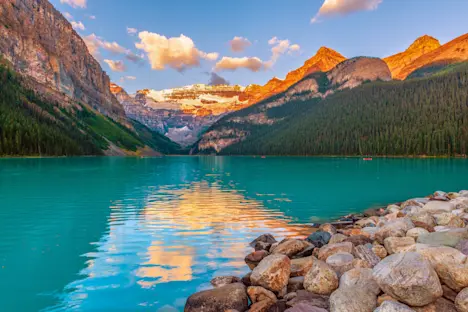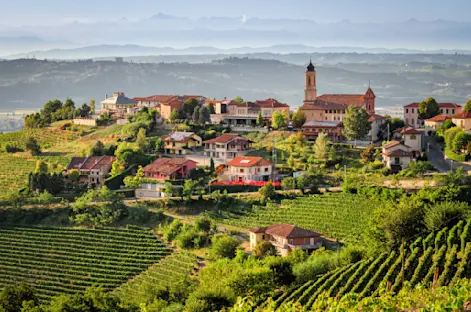I always try to be as we're approaching, be conscientious of which way it's gonna go if something goes like it doesn't expect. The other thing that could happen is if there's all this stuff going on over here with could be other bears, could be people, could be anything that's on that bear's radar. And it sees us as the most predictable thing in that scenario. First thing it's gonna do is gonna come right here. I'd been out on the East Coast going to college and it just wasn't for me. I just knew that I needed to be not there. And Alaska was as far away from Washington, D. C. As I could get. I remember feelings that I felt that first day that I went out and saw bears. And I am, in a lot of ways, still chasing that feeling. There's a big swath of land on the north end of the Alaska Peninsula. Katmai Coast, Lake Clark Coast, and McNeil, if you combine those three, it's definitely the Bear Coast. The best bear habitat in the world. It's a stunning landscape. It's really beautiful. Rugged and pretty much untouched. You know, it's a remarkable place and it's got an amazing cast of characters in terms of wildlife and cultures and landscapes. Some of the rivers are silt laden and so you get this incredible turquoise blue if they're being fed from glaciers. The chocolate of a brand new moose baby. The really rich wetlands with More shades of green than anywhere else I've ever seen. You're gonna see mountains behind you. Maybe in the distance you'll see some glaciers. You get the alpine glow on them and you really understand now why people sometimes, you know, color mountains pink. The valley bottoms, coastlines, the high mountain areas. A remarkably diverse variety of habitats. And things are growing before your eyes. You can literally watch things growing. If you blink, you're gonna miss something, especially this time of year in the summer. There's no way that anything could be mundane here. You cannot drive there. There's no airport to fly into. This is the ultimate recreation. Everything you could want to do in Alaska is right here in this area. It's a really vibrant and maybe sometimes violent coast in storms. It's a tough environment. It's an extreme. The bears roam completely wild and they rule the coast. I would put the Bear Coast and that part of Alaska in terms of value to humanity on par with places like the Amazon. The last pockets of biodiversity in this world are around indigenous communities. And our children and their children and our great grandchildren, they have an inherent right to our lands and waters. So it has to be such a priority to protect and preserve what we've got intact. We definitely have the potential to mess up that ecology. You know, the biggest conservation threats for the system are going to be those that are global. Climate change is going to have an impact. We know that. We don't know exactly what it'll be yet. But we're starting to see some things. Just four years ago, we were in a severe drought, which was the first time that's ever been documented up here. There will also likely be continued pressure for development of some resources in the area. The Pebble Mine and the Johnson River Mine, they're looking at maybe twenty to thirty year windows of time for ore extraction. Short term gain, but the ill effects of possible toxic spills and damage to the river systems can easily, in a short window of time, destroy something that otherwise can be sustained indefinitely. This mining district would be located at the headwaters of the most productive rivers of the Bristol Bay watershed. And our watershed supplies fifty percent of the last wild sockeye salmon run on the entire planet. It's the most hydrologically complex area they've ever considered permitting a mine in the world. You've got this habitat that is intact and they might say, oh, well, it'd be no big deal to put some infrastructure over in this corner. It might start with a road. It might start with a well. It might start with a mine. Each of those things, if you looked at it as a single thing, it it might not be that big a deal. But nobody looks at it cumulatively. Suddenly, what you're left with is unrecognizable from where you started. Doug Chadwick's line was, what most people know about bears has more to do with the nature of stories than the nature of bears. Lewis and Clark put the name grizzly bear Ursus Arctos Horibilis. To what we actually call a brown bear. And they have a horrible reputation as being these bloodthirsty killers. Definitely something that is played up in movies. That scary wilderness creature that could attack you. It's always trying to kill something or attack something. They're thought of as man eaters or man killers. But most of the bears really aren't a threat to human. Treat them with respect, give them the distance they want, don't surprise them, and they're very predictable. When I was young, I actually was a hunting guide. Initially it was exciting you know being a real man and out you know man against a bear but that faded pretty quickly And then after a while I just got to where I started rooting for the bears instead of my clients. I didn't really want to see any more bears die. I just I couldn't do it anymore. I sold the hunting operation off and, started getting back into photography. Then being able to share that with other people. The look I get on people's face that have thought these bears were gonna be terrifying and they didn't really want to be near the bears. After a day or two with the bears, just seeing them realize that these are just an incredible animal and amazing to watch. We're so similar. We're opportunistic omnivores. We share a lot of food habits. We have the same habitat preferences. There's mutual curiosity. And that's maybe one of the things that makes it very easy for people to connect. To watch the interaction between moms and cubs and then moms protecting those cubs, that's a deep down emotional thing. And each bear has an individual personality. We'll always get somebody who by the end of the day, they're like, Holy cow, I really didn't realize how playful they were or how lazy they are or this one's grumpy and this one's happy and they actually have personalities or even moods. I get excited every time I see a bear because it is that sentinel of a wild place. I know I'm in a wild place when I see a bear on its own doing its own thing. Know, top predators are extremely important and kind of the bellwether of a healthy system. When you have large carnivores roaming across a wide landscape, it's telling you that there's a great deal of productivity, that those large carnivores are able to find food, and that they're able to move throughout that corridor throughout the summer season to find different salmon in different rivers. This chunk of land has all of the things that a bear needs to be successful, and it all comes back to the salmon. From the bears to the seagulls to the native indigenous people and their lifestyle, everybody in the spring is waiting for the salmon to arrive. I grew up here in Alaska. I was born up in Barrow. It's nice to be an American who still has a heritage. And the sense of heritage that I've got is the sense of place that is home. We've got a big place and big opportunity. It's the last, you know, of the intact salmon ecosystems in North America certainly and providing now half of the sockeye salmon for the world. It's impossible to overstate how important salmon are to the whole system and the people living in these traditional communities. The word for food in Yupik is niqa, which is the same word for fish. And we're called the last intact salmon cultures of the world. In ecological systems, it always comes down to energy transfer and energy flow. The rivers are the lifeblood of Alaska, and the salmon are the energy and the product that that blood delivers. The salmon start in the rivers, they go out into the North Pacific, they gather up all this abundance. When we have our salmon come back in the summer, each of those salmon has nitrogen and other nutrients that it's picked up from the ocean. And they bring all of that back up into the streams. And after they've laid their eggs, they die and you find them all along the riverbank. And not only are they feeding all of the animals that eat them, they're also really feeding the landscape. The bear's carrying those nutrients in and dropping salmon and poop. They're the can openers that are opening up these salmon, so everything else downstream is benefiting from the nutrients that are going back into the system. Those nutrients are then part of the soil and can help different types of vegetation grow. When you get into the forest and look at the trees, those trees have marine derived nitrogen in them. It's a fabulous cycle, and I think of these rivers as living their full potential, thriving for all of the things from the insects in the water on up to the bears that roam the coast looking for food. The beauty of the Bear Coast area is that we don't have to restore anything. It's here. We just have to protect it. Storytelling is an important piece of natural history travel. The more people come and see a wild place and see an intact place, the more advocates we have for protecting these places. Before you can care for something, you have to care about it. Those of us that live here know just how special it is. And it is a place we love and a place to protect for now and into the future. I have an overwhelming sense of gratefulness that I found this place, that I found the opportunity, and I just don't know how to express that more except for to share it with other people. In a couple of generations, I would like to think if there's some kid in a city like I was who decides he really wants to learn as much as he can about bears so that he can have some of the same opportunities that I had. I get this sense when I'm watching bears do their thing as they have forever that there's something right with the world. Like I feel things being removed from my shoulders. And the only thing I'm focused on is that bear that's napping ten feet away. I became a dad two and a half months ago. Like, I do want to take my daughter to see these things so that she can have the same context to the world that I've had. I want everybody to be able to feel that. This place has something for everyone, whether it's food on the table, whether it's dollars in your pocket, whether it's just making you feel better that there's a place like that on earth. When you look at all the things that that place does for bears, does for people, does for everything, You recognize that value and that's how it gets saved. We have an incredible power, whether we recognize it or not. In order to have a world where bears exist, we need to make a conscious decision to have bears in the world.

































